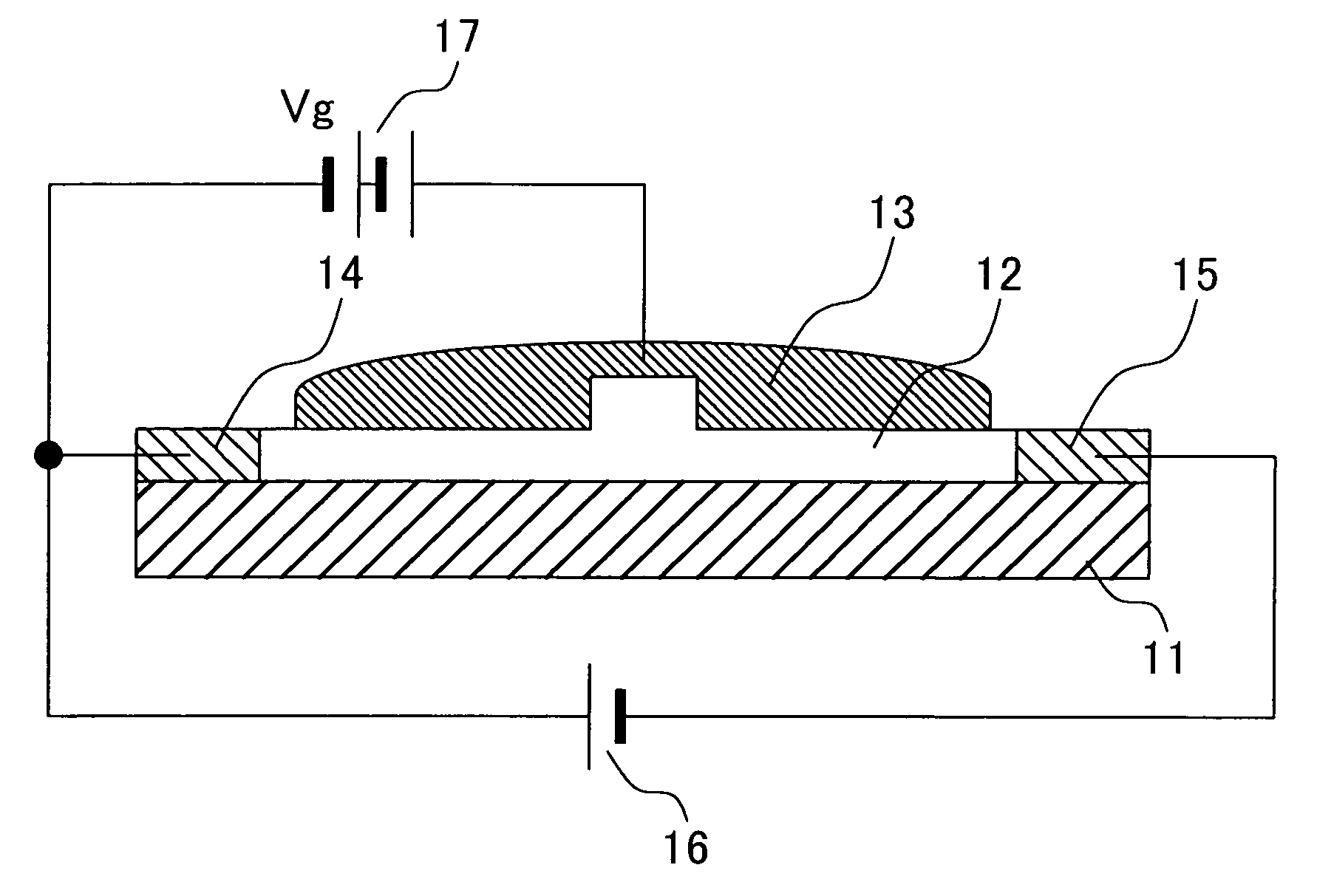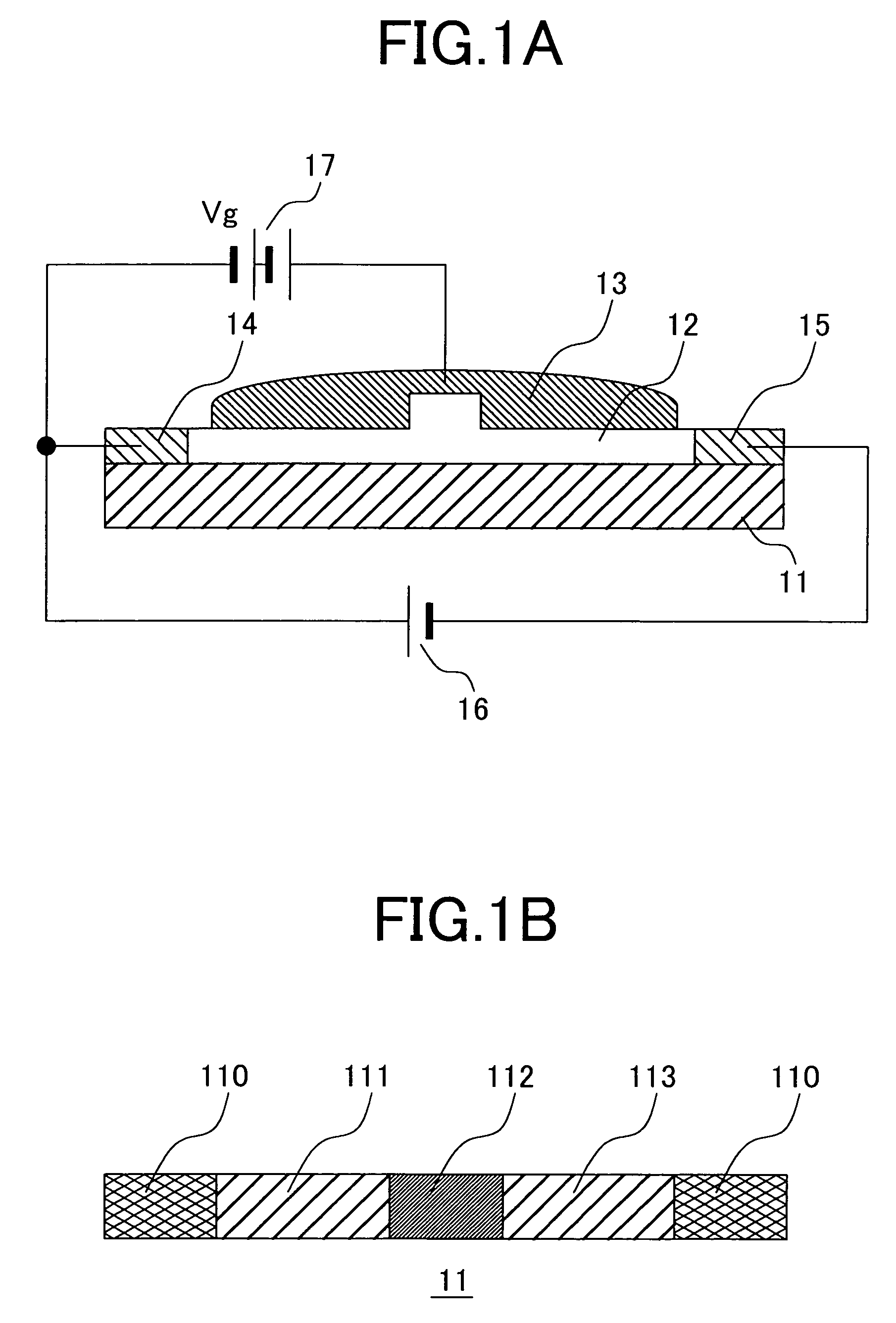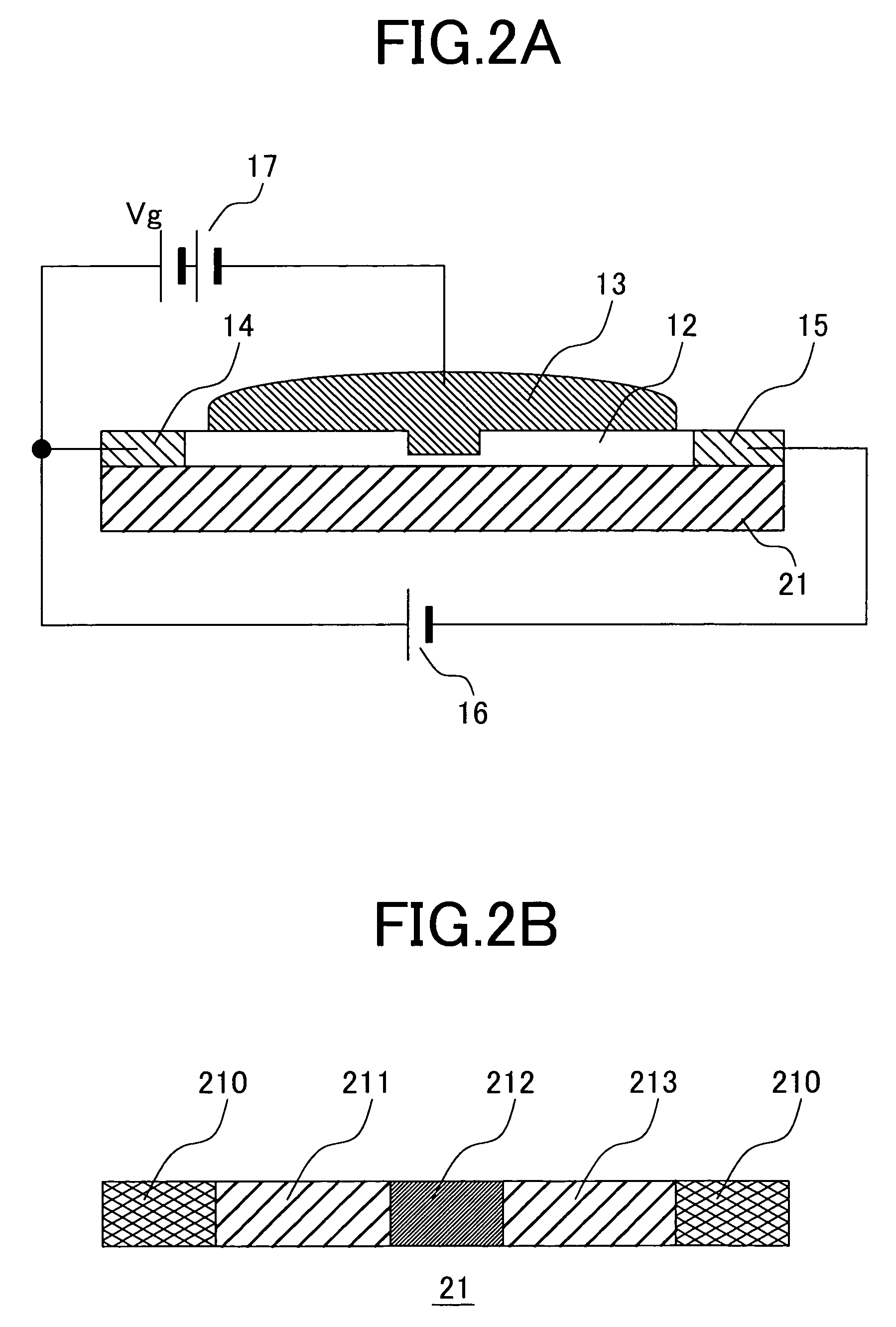Electric-field-effect magnetoresistive devices and electronic devices using the magnetoresistive devices
a technology of electric field effect and magnetoresistive devices, which is applied in the field of electric field effect magnetoresistive devices and electronic devices using magnetoresistive devices, can solve the problems of potential wiring melting problem, unavoidable increase in electrical power consumption, and unavoidable increase in wiring current for writing, so as to achieve good compatibility, control and optimize the mr ratio, the effect of reducing the power consumption required for device operation
- Summary
- Abstract
- Description
- Claims
- Application Information
AI Technical Summary
Benefits of technology
Problems solved by technology
Method used
Image
Examples
first embodiment
[0035]FIG. 1A is a cross sectional view showing the FET structure of the field effect magnetoresistance device of the first embodiment. An electrical insulating layer 12 whose structure is patterned in a convex shape is formed on the upper part of the nonmagnetic substrate 11 capable of being doped with electric field carriers. A first metallic electrode (gate electrode) 13 is formed on the insulating (film) layer 12. When an external section applies a positive voltage of Vg>0 to the gate electrode 13 from the power supply 17, a strong electrical field is applied locally to the substrate directly below the region where the insulating film layer is thin and that part of the substrate can be doped with a high concentration of hole carriers (doped region with high concentration of carriers is formed). On the other hand, when a weak electrical field is applied to the region on the substrate directly below region where the insulating film is thick, then that part of the substrate can be ...
second embodiment
[0042]The FET structure of the field effect magnetoresistance device of the first embodiment can also be achieved with a ferromagnetic substrate capable of being electric carrier doped rather than by a non-magnetic substrate capable of being doped with electrical field carriers. In other words, a ferromagnetic domain / nonmagnetic domain / ferromagnetic domain junction structure possessing functions identical to the first embodiment can be achieved even by a ferromagnetic substrate capable of being doped with electric field carriers.
[0043]FIG. 2A is a cross sectional view showing the FET structure of the field effect magnetoresistance device of the second embodiment. Sections identical to the first embodiment of FIG. 1A are assigned the same reference numerals. Comparing FIG. 2A with FIG. 1A clearly shows that an electric field carrier dopable ferromagnetic substrate 21 is utilized instead of the electric field carrier dopable nonmagnetic substrate 11. This comparison also shows that a ...
third embodiment
[0046]A multijunction GMR device or TMR device and its multiple circuits can easily be formed on the substrate by combining the detailed patterning of the insulating layer 12 of the first embodiment or the second embodiment and the MR ratio can be further improved. FIG. 4A is a cross sectional view showing the multi-joint structure of the FET structure of the first embodiment. FIG. 4B is a cross sectional view of the ferromagnetic domain / nonmagnetic domain / ferromagnetic domain multi-junction structure. In FIG. 4B, the reference numerals 111 and 113 should be assigned to the ferromagnetic domains between two nonmagnetic domains 112; however, to avoid complexity, one number was assigned.
[0047]When comparing the magnetoresistance of the magnetoresistance device comprising the above described multijunction GMR device or TMR device with the simple device shown in FIG. 3, the multijunction quantity is set as n, and the total series-connected magnetoresistance is found to be improved n tim...
PUM
| Property | Measurement | Unit |
|---|---|---|
| thickness | aaaaa | aaaaa |
| thickness | aaaaa | aaaaa |
| thickness | aaaaa | aaaaa |
Abstract
Description
Claims
Application Information
 Login to View More
Login to View More - R&D
- Intellectual Property
- Life Sciences
- Materials
- Tech Scout
- Unparalleled Data Quality
- Higher Quality Content
- 60% Fewer Hallucinations
Browse by: Latest US Patents, China's latest patents, Technical Efficacy Thesaurus, Application Domain, Technology Topic, Popular Technical Reports.
© 2025 PatSnap. All rights reserved.Legal|Privacy policy|Modern Slavery Act Transparency Statement|Sitemap|About US| Contact US: help@patsnap.com



